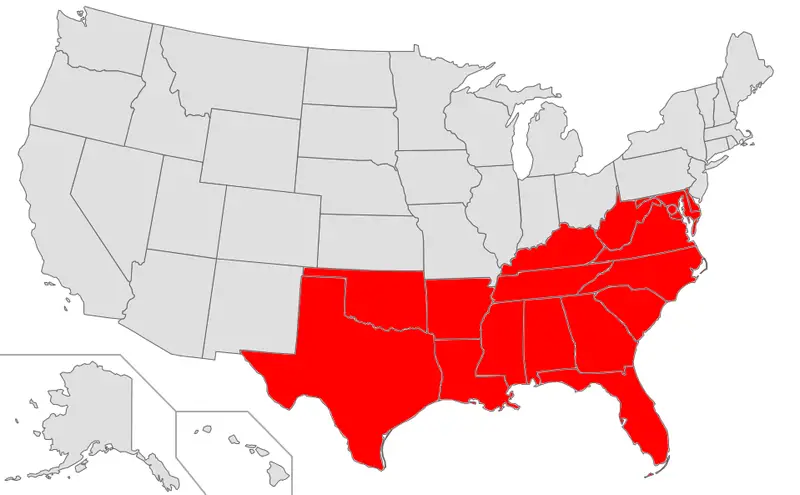In government, business, or military operations, it is usually useful to be able to recognize and distinguish different geographical regions on the map.
One way of doing this is through vernacular regions or perceptual regions.
A vernacular region is an area defined according to people’s perception of the region, as opposed to demarcation borders.
Residents of such regions are interconnected by a common identity, shared norms, a shared past, or/and mutual interests.
Essentially, vernacular regions are a shorthand means of identifying places without the need for jurisdictional boundaries.
Vernacular regions are not usually created by professional geographers. Instead, they are invented by average people, usually the locals of the region.
Vernacular regions can be different things to different people depending on their ideas or thoughts.
Due to this, vernacular regions have loosely defined boundaries that depend on people’s views or perceptions.
However, in everyday conversations, people of the area will recognize the region by informally referring to it through vernacular terms or their ordinary language.
These can be unofficial names or nicknames. The names of vernacular regions usually carry some meaningful images to the people.
These can be based on landmarks, sights, or local displays of public art.
For example, North Country is associated with images like clean air, calm, honesty, etc.
Examples of Vernacular Regions
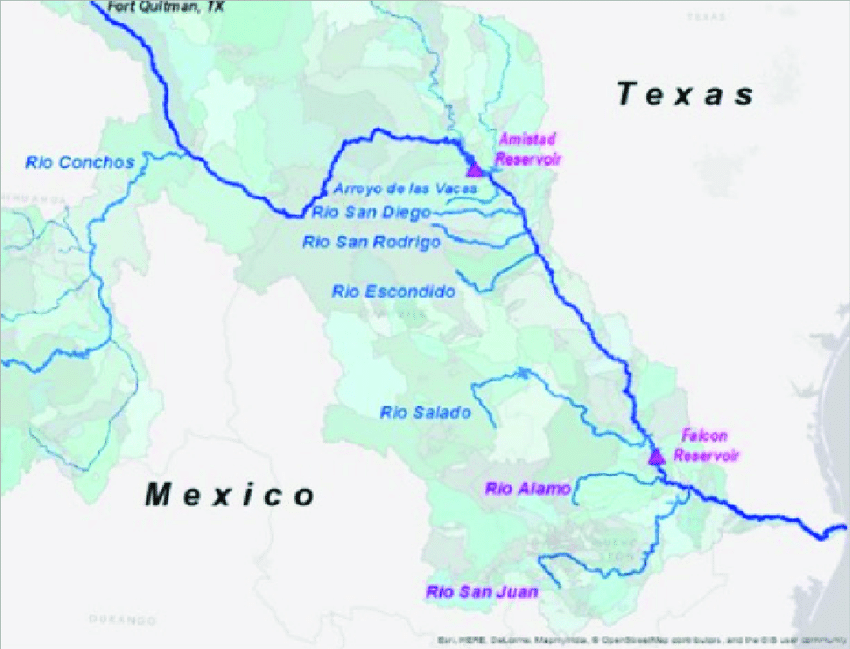
1. Chinatown
Chinatown is a term used to describe cultural enclaves for Chinese people located in non-Chinese towns.
The first Chinatowns were developed by 19th-century Chinese immigrants who moved to various parts of North America.
As such, these vernacular regions are most commonly found in Canadian and American metropolises.
People from different ethnicities visit Chinatowns to experience the rich Chinese culture and take part in commercial trade with Chinese merchants.
Inhabitants of these regions observe all native Chinese holidays, such as the National Day of the People’s Republic of China, the QingMing Festival, and the Chinese New Year.
2. Midwest
The Midwest is a physical location in the United States comprising Iowa, Wisconsin, Missouri, Illinois, Michigan, Ohio, Indiana, and Minnesota.
It qualifies as a vernacular region since it is not officially recognized, but is representative of the region’s unique culture.
Midwestern culture is centered on strong family values, a huge sports following, community code of conduct, and work ethic.
3. Niger Delta
This region comprises wetlands adjacent to the Niger River that sit on the Atlantic Ocean’s Gulf of Guinea.
It is officially recognized by the Nigerian government and has a populace of around 31 million spread across 40 ethnic groups.
This region comprises 9 states, all of which are reputed as some of the most significant coastal marine and wetland ecosystems in the world.
The Niger Delta is also characterized as a petroleum-rich area.
Its residents, however, disapprove of the region’s increasing oil production due to growing environmental concerns.
Currently, a local militant group known as the NDA (Niger Delta Avengers) is spearheading a rebellion aimed at chasing away petroleum consortiums that set up shop in the region.
4. Kulunda Steppe
Also known as Kulunda Plain, Kulunda Steppe is a huge plain created over time by the deposition of river sediments.
It is situated in parts of Kazakhstan and parts of Russia, in between the Irtysh and Ob rivers.
It is home to some of the main water bodies in Western Siberia, such as River Buria, Lake Bolshoye Topolnoye, and Lake Kuchuk.
This region is mainly characterized as the biggest steppe conversion in the world and a leader in smart agriculture.
Inhabitants of this region mostly take part in cash crop cultivation, making this one of Europe’s most important agricultural hubs.
5. The Emerald Coast
This is an unofficial area that cuts across the Gulf of Mexico in Florida.
It covers five counties and stretches over Fort Walton Beach, Panama City Beach, Pensacola Beach, and Navarre Beach.
The Emerald Coast region also includes Alabama neighborhoods occupying the Baldwin county coast, such as Fort Morgan and Gulf Shores.
It is commonly referred to as the “Redneck Riviera” or “the Gulf Coast’s playground” due to its deep Southern culture and lavish lifestyle.
This coastal region is home to an impressive string of opulent nightspots, motels, and hotels, and the inhabitants are big on deep-sea fishing.
Additionally, the Emerald Coast is known for its multiple military bases which have led to several movie appearances in the area.
6. Silicon Valley
This is a colloquial phrase for the tech-rich, southern San Francisco Bay Area in America.
The region is primarily characterized as home to most of the biggest tech companies globally.
Its name is traced back to the mid-1960 when silicon chips were invented by one of the companies in this region.
Ever since, this area became the international hub for technology research and innovation initiatives.
International tech conglomerates including Facebook, Apple, Adobe, and Microsoft are headquartered in the Silicon Valley, as well as several leading venture capital firms.
7. Flyover County
This word is used to describe all landlocked states in the United States.
It is considered by many to be a derogatory description of American areas that are not connected to the ocean.
People from coastal states use this name to refer to the perceived inferiority of states in this midland region as it implies that they only prefer flying over the region.
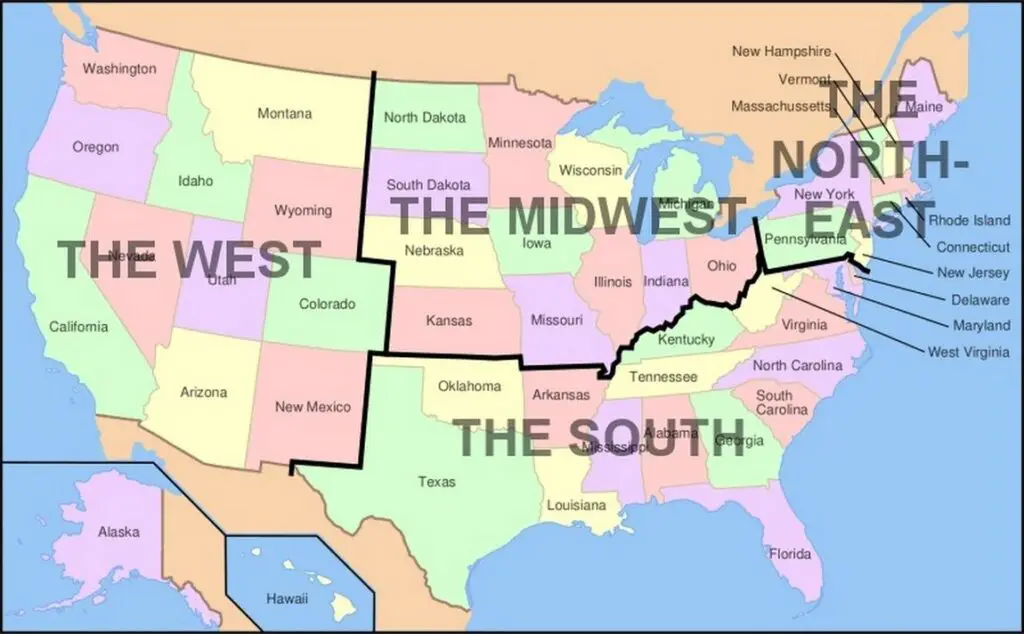
8. Hampton Roads
This region consists of Northeastern North Carolina and Southeastern Virginia metropolises that are within the Tidewater area of the Chesapeake Bay.
It is known for its rich history, ice-free harbor, and a wide array of high-end waterfront properties.
While this region is not formally defined, it is reputed as colonial America’s birthplace.
Its name is derived from a London organization, Earl of Southampton, which was the driving force behind British colonization in Virginia.
It is also the first permanent British residence in America, particularly in Jamestown.
Hampton Roads’ vast harbor also provided ships with a safe place to ride at anchor without the risk of displacement, thus the name “Roads” in reference to roadstead.
9. The Middle East
This term is widely used to represent the areas between India and Arabia including Arabia, Asia Minor, Iraq, the Socotra Archipelago, East Thrace, Iran, and Egypt.
This terrain is perceived as an Islamic region given that this is the inhabitant’s formal religion.
The area is also known for its arid climate and abundance of major rivers such as the Tigris and Euphrates and the Nile Delta.
10. The Research Triangle
The Research Triangle is a colloquial term for North Carolina’s Piedmont area covering Chapel Hill Town, Raleigh City, and Durham City.
Other member counties include Lee, Vance, Person, Chatham, Granville, Person, Wake, Johnston, and Franklin.
This Northern Carolina region derives its name from its vast wealth of research facilities.
It is home to three of the leading research universities in the country, namely, Duke University, the University of North Carolina at Chapel Hill, and North Carolina State University.
A huge number of tech companies, such as IBM, LabCorp, Toshiba Global Commerce Solution, and Lenovo, have also set up research facilities in the region.
The Research Triangle is also characterized by the inhabitants’ shared following of the region’s National Hockey League franchise, the Carolina Hurricanes.
11. High Desert
This vernacular region is an unofficial area stretching across the westernmost part of Southern Carolina’s Mojave Desert.
This includes parts of Palmdale to the northwest, Parts of Lancaster to the southwest and parts of Barstow Desert to the north.
Its name is representative of the area’s unique desert climate characterized by unusually cold winters and unusually hot summers.
The people of this area share in its native vegetation, animal species, climate, and high altitude.
Like many other desert regions, the High Desert is sparsely populated compared to other regions in the United States, with areas such as Ragtown and Kelso being entirely uninhabited.
12. Eastern Europe
This is a sub-region of the European continent comprising countries in the area’s eastern hemisphere.
These include Caucasus states, Baltic States, Central Europe, Post-Soviet countries, and Southeastern Europe.
Russia is the largest country in Eastern Europe as it covers around 40% of the entire continent’s landmass.
Eastern Europe is mostly perceived based on its socio-cultural and political attributes.
An integral part of this culture is the region’s heavy reliance on Eastern Christianity which emanated from the Ottoman and Eastern Roman Empires.
Inhabitants of this vernacular region are members of the Orthodox Church, which is characterized by the Cyrillic script and the Slavonic liturgical dialect.
In the political front, Eastern Europe comprises states that were part of the Eastern Bloc during the Cold War.
13. New England
New England is made up of Maine, New Hampshire, Vermont, Rhode Island, Massachusetts, and Connecticut, all of which are located in the United States’ northeastern terrain.
While this is a formally delineated region, it is mostly known for its rich history and unique cultural heritage.
This region’s culture was shaped by multiple waves of immigrants including the Irish, English settlers, Italians, French, Germans, Polish, and French Canadians.
Historical interrelations between these groups led to the development of the New English dialect which is most famous for its ‘Boston accent’ and is a staple among New England residents.
Another standout attribute of this vernacular region is its superior religiosity.
In the early 17th century, Puritans came to this region and deviated from the Catholic-based Church of England to Protestant Christianity, which is the primary religion of New England residents.
Also, given that English colonists performed fishing and whaling, today’s New England cuisine comprises mostly seafood.
14. Inland Empire (IE)
IE is a metropolitan region located in the inland area adjacent to South Carolina’s coastline.
It is made up of the southwestern cities of San Bernardino County, the Coachella desert community, Victor Valley, and Riverside. Historically, this region was considered one of America’s main agricultural centers.
Up until the nineteenth century, IE residents took part in winemaking, citrus and dairy farming.
However, the twentieth century saw a decline in IE’s agricultural industry, transforming the region into a center for affordable housing, especially for migrants.
15. Piedmont Triad
Another example of a vernacular region is the Piedmont Triad, a metropolitan area consisting of three North Carolina cities, namely, High Point, Winston-Salem, and Greensboro.
Due to its central location, this region is known nationally as a strategic distribution and manufacturing center.
The people and businesses of this region share a particular mutual interest in furniture, textile, and tobacco industries.
Some of the notable conglomerates located here include Lorillard Tobacco Company, Hanes and the International Textile Group.
Importance of Vernacular Regions
Studying vernacular regions helps to recognize richer elements about places that are not captured by official borders or designations. This is because it comes from the insights of the local people who live there.
It also recognizes that regions are not fixed once and for all such as depicted in maps.
Instead, it views places as dynamic and flexible based on people’s continuous interactions.
Vernacular Regions Vs Formal Vs Functional Regions
Vernacular regions can be contrasted with formal and functional regions.
Formal Regions
Formal regions are areas with administrative or political boundaries that are well defined and beyond dispute.
States, countries, or provinces are examples of formal regions.
Zones such as national parks or school districts that are enclosed by official boundaries are also considered to be formal regions.
Natural physical features can also be used to mark boundaries e.g., the Rio Grande forms part of the boundary separating Mexico and the USA.
Formal regions are also known as uniform regions because they have at least one attribute that is uniform across the whole region.
A formal region is defined by facts that are not in dispute or debatable between different people. For example, cities or towns have set boundaries that can be proven.
Related Post: Formal Region Examples
Functional Regions
Functional regions are defined by a node or center that produces a function that serves the surrounding areas e.g., utilities like water supply to surrounding areas by pipes from a water company; electricity from a power plant with power lines distribution; pizza delivered from a distribution center.
As you move further and further away from the center, its influence fades.
An example of a functional region is cities such as Detroit. Detroit is surrounded by several towns which together form the Detroit Metroland.
People travel from these areas to Detroit city when going to work.
Similarities and Differences
As aforementioned, formal and functional regions are usually based on facts that cannot be debated. The facts on which they are based can be proven.
On the other hand, vernacular regions are less certain and are based on people’s subjective feelings or prejudices about a region. These may be factual or not.
Whereas vernacular and formal regions are based on similarities of characteristics in culture, climate, or geographical features, this need not be the case with functional regions.
Therefore, functional regions can have diverse characteristics. The only unifying characteristic of a functional area is its function.
Vernacular regions are less well defined compared to functional and formal regions. This is because it is based on people’s perceptions which vary.
There is usually more agreement about the functional and formal regions than for vernacular regions.
Even though both formal and functional regions can change, vernacular regions can change more frequently or more easily. Formal regions are the most stable and consistent regions.
Functional regions exist as long as the function exists. For example, a functional region based on a newspaper delivery ceases to exist when the newspaper goes out of business.
Vernacular regions are the most flexible because they are defined by the local citizens themselves from their daily interactions. As their perceptions change, vernacular regions also change with them.
Finally, functional and formal regions are created by the authorities or geographers but vernacular regions are formed by people of an area based on their sense of place.
Further Reading: 10 Cultural Region Examples (Human geography)
FAQs
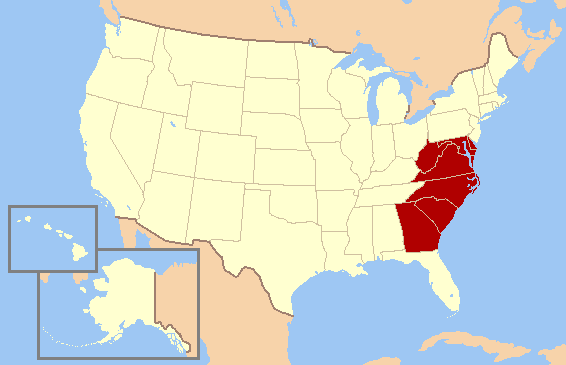
1. What is a vernacular cultural region?
A vernacular cultural region refers to an area that has a unique shared culture among its people.
For example, it may be a religion, a local spoken language, a dialect, or a unique political orientation that is collectively perceived by its inhabitants.
A vernacular cultural region can be represented by a nickname. For example, Dixieland is a nickname standing for the Southern United States.
One of its cultural symbols is the minstrel songs that were produced in the South during the Civil War.
Since Dixieland lacks a clear definition of where its boundaries lie, it is a vernacular region.
2. Is the Middle East a vernacular region?
Yes. People usually only have a rough idea of where the Middle East is without agreeing on where its actual boundaries are.
Therefore, some may include some countries while others may exclude others.
For example, does Egypt lie in the Middle East or Africa? There is no universal agreement. Due to this imprecision given by various people, the Middle East can be considered a vernacular region.
However, the Middle East can also be viewed as a formal region due to the attribute of religion. This is because the Islamic religion is a highly uniform attribute in the region, giving it a distinctive religious identity.
3. Is Australia a vernacular region?
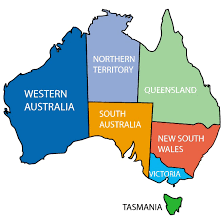
Australia is a continent that is located in the Asia Pacific region. It is part of the South Pacific and British Commonwealth.
Since it’s a geographical and political unit with clearly identifiable boundaries, Australia is not a vernacular region.
Its boundaries can be proven which establishes it as a formal region.
However, Australia has some well-known pockets of vernacular regions within it such as Outback Australia.
4. Is New York a vernacular region?
Yes. New York has also been nicknamed the Big Apple to reflect that it is defined by feelings or perceptions.
This name has a cultural image because it was previously associated with horse racing, dance, and jazz music before it faded from use in the 1950s.
However, it was revived again and continues to be associated with New York City as the capital of the world.
Tourists think of Big Apple when they think of New York.
Like other cities in general, New York can also be considered a functional region since it has subways, highways, and railroads connecting the suburbs to the central parts of the city.
5. Is the Bible Belt a vernacular region?
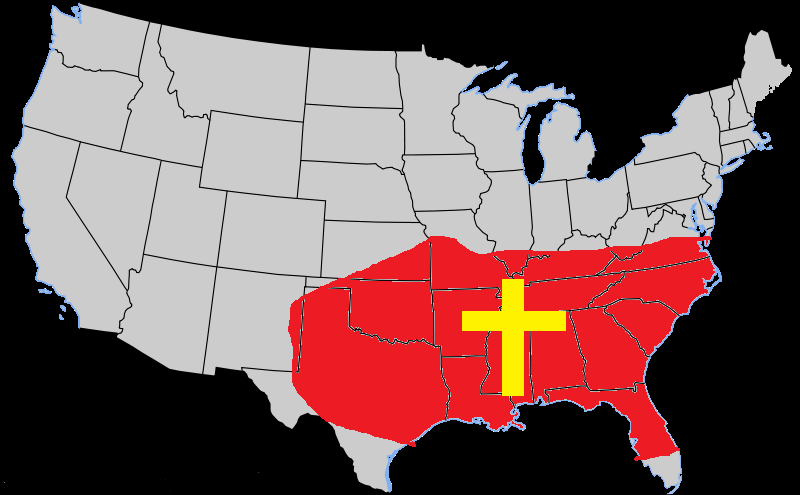
Yes. The Bible Belt is an area that lies in the southern part of the United States.
Its identifiers are culture and politics which are mainly shaped by social conservative Christianity.
The specific faiths of its people consist mainly of protestants i.e., Methodists, Southern Baptists, and evangelical Christians.
Its people are known as the most church-attending people in the United States.
Because it is not defined by an actual border which all can agree on, the Bible Belt can be viewed as a vernacular region.
Perceptions or stereotypes that people hold about the Bible Belt are low college graduation rates, high incidence of obesity, and affiliation with conservative values.
6. Why is the South a vernacular region?
The area called the South lacks a well-defined boundary. This is because the boundary is defined differently from person to person.
For example, some may include all the former states of the Civil War Confederacy while others may exclude Oklahoma or Missouri.
Some of the unique characteristics that people associate the South with are cotton farming, a distinctive climate, low education achievements, and the popularity of talk show radios.

